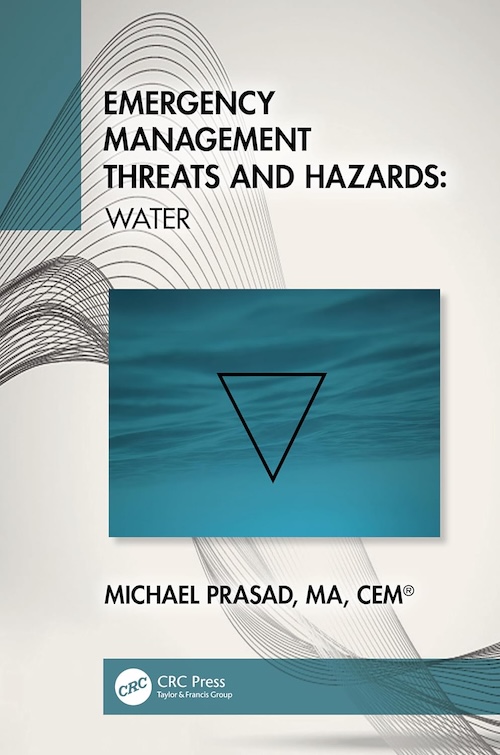Life After Chase: Michael Prasad
Publishes Major Guide to Emergency Management
Of Water Threats, Hazards

Michael Prasad spent 15 years at Chase, contributing to team activities focused on the Office of Foreign Asset Control (OFAC) monitoring and reporting, as well as Anti-Money Laundering (AML) monitoring. He facilitated training on internal Management Accounting online systems
and supported the World Mastercard launch and Euro and Y2K systems conversions.
Now, as a certified emergency manager, he's switched his focus from financial risk to natural hazards, with considerable success.
A major reference publisher recently released Prasad's Emergency Management Threats and Hazards: Water, a comprehensive "pracademic" guide to water-related emergencies. It is meant to be an indispensible reference for government officials, water system operators, urban planners and others, including those with non-Emergency Management roles, to help companies and communities become more disaster ready and/or disaster resilient.
In a contribution to this CAA website, Prasad previously explained how his response to 9/11 paved his personal path from banking to emergency management. First as a volunteer and then as a staffer and consultant, he became involved with emergency management for the American Red Cross, the State of New Jersey and FEMA.
"As is said in Emergency Management: If you have seen one disaster, you have seen one disaster," Prasad said. The book will be available online as well in print. "Cases will be updated," he noted. "For instance, Katrina was replaced with Sandy" – a hurricane for which Prasad headed up the American Red Cross's NJ statewide readiness planning and response during 2012.
On the other hand, there are constants in planning. "The idea of a flood is a flood. A drought is a drought. The weight of water doesn’t change," Prasad said.
His book is organized into four major parts. After an introduction and a brief review of Emergency Management concepts, he addresses threats around water, quality hazards with water, quantity hazards with water, and complex incidents, including both quantity and quality hazards.
Prasad figures he spent nine months writing the book – with the nine months spread out from March 2020 to April 2024.
Prasad has outlines for four more hazards: earth, wind, fire and "spirit", addressing the five elements of emergency management for each: prevention, mitigation, preparedness, response and recovery.
He began what he hopes will be a set of five books with water because he sees it as the most complicated threat. "It has elements of too much and too little. Quality issues. Sea water vs fresh water," Prasad observed.
Prasad is currently working on an article related to choices made related to infants and toddlers during disasters, particularly on supporting breast feeding during disasters.
Are governments and corporations asking the right questions in this field? "No," Prasad responded quickly. "They all have the blueprints of their neighbors who haven’t asked the right questions either. Government has self-serving needs, while they need to prioritize human needs first. They want continuity of operations before people’s needs, while professional emergency management sets the goal of putting life first, then property, then environmental restoration and then recovery. We need a paradigm shift to look at things that way. It's telling that the National Weather Service is under the Department of Commerce, and FEMA is under Homeland Security. The Government should broaden its focus on natural “hazards” – not disasters), a word that puts the blame on Mother Nature."
Hazards, Prasad said, include cyber, natural or human-made, even fictitious (the "spirit" hazard). The latter includes misinformation and disinformation, false panics, yelling fire in a crowded theater, conspiracy theories. "Many are communication crises that result in a real-world problem," he added.
Prasad's book is available via several online vendors, including the publisher, Routledge.
When it rains, it pours
Send comments to news@chasealum.org.

